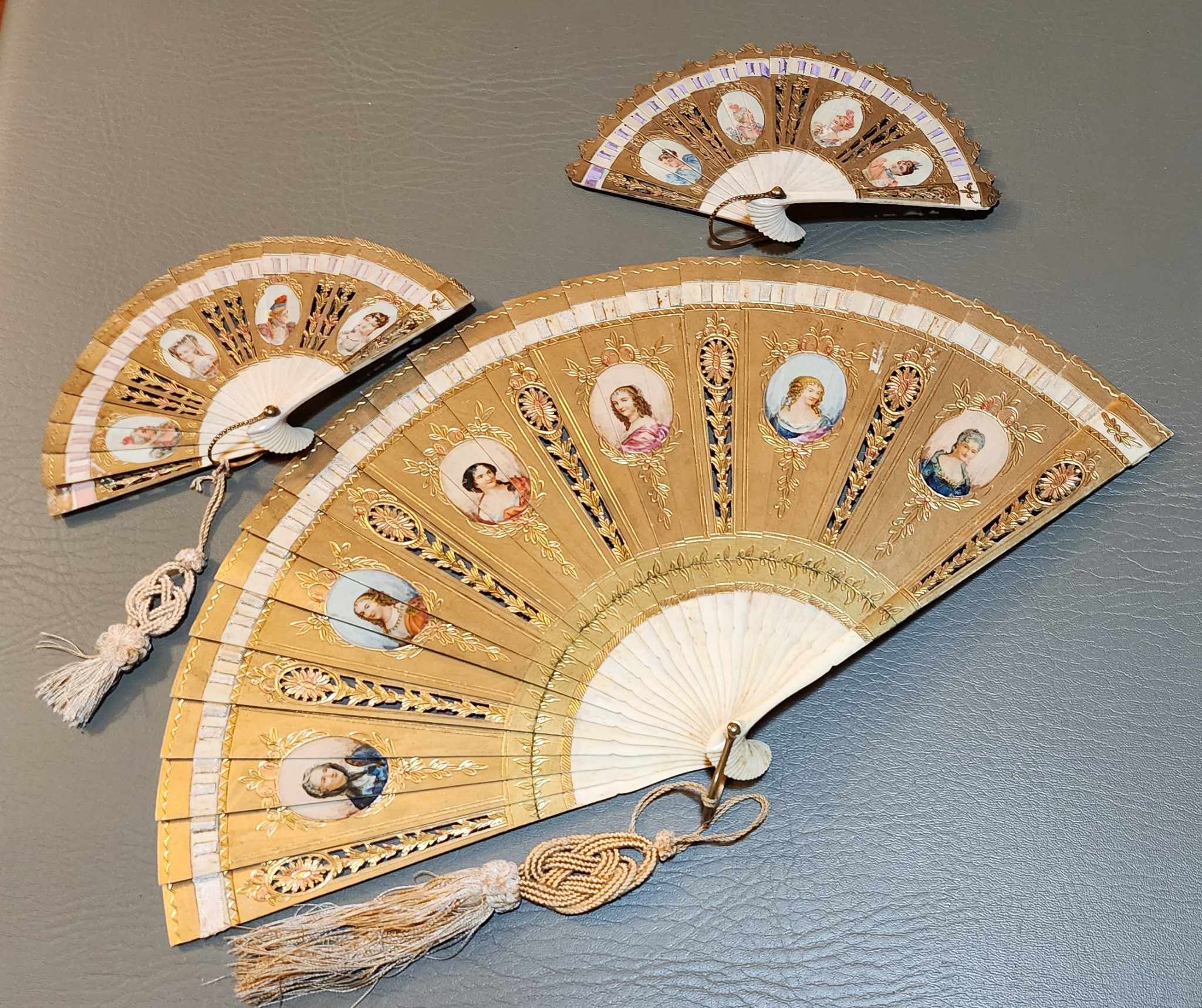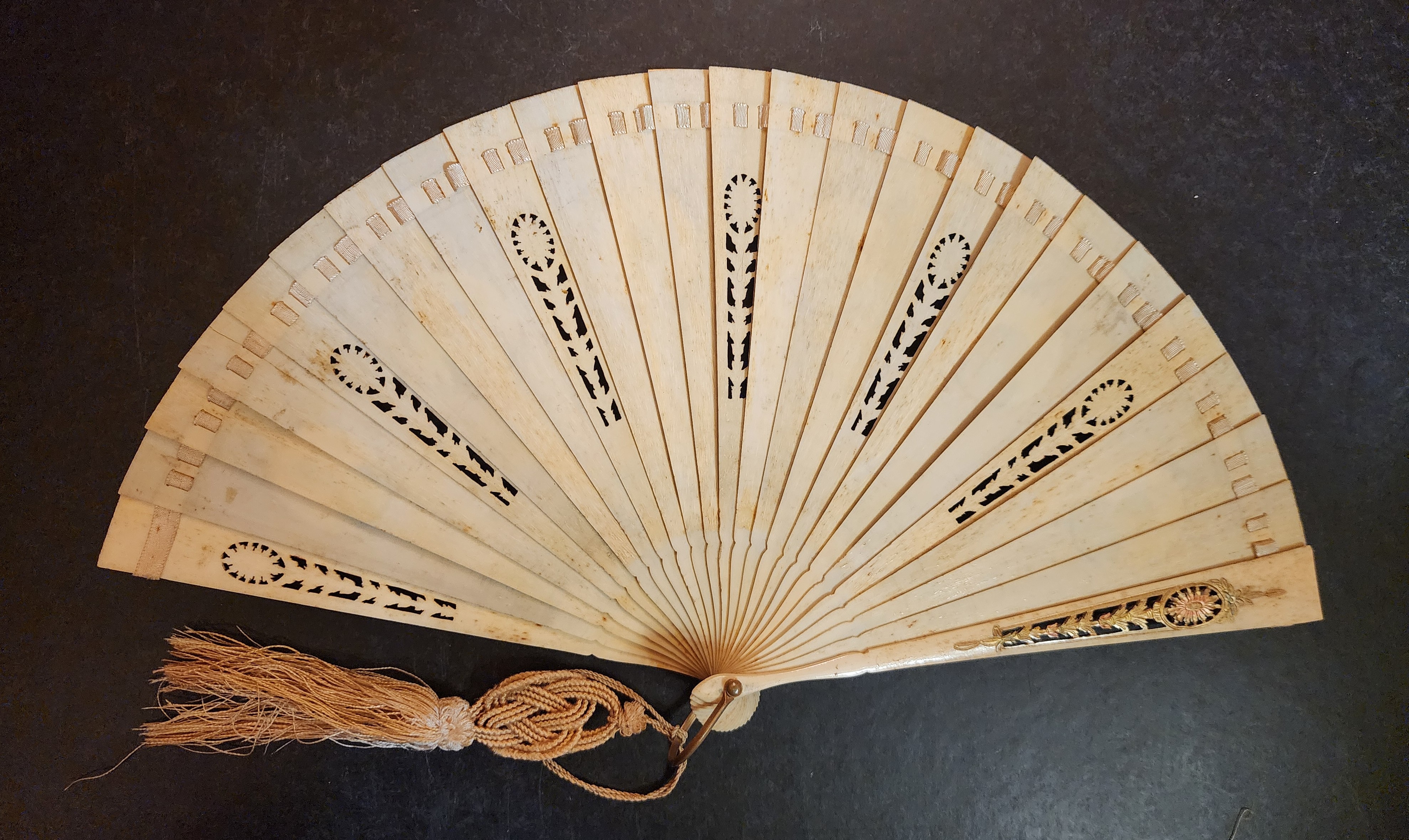 Anita P. brought these lovely brisé portrait fans to my attention. She purchased the larger fan first and later acquired the miniatures. What's fascinating is how similar they all were.
Anita P. brought these lovely brisé portrait fans to my attention. She purchased the larger fan first and later acquired the miniatures. What's fascinating is how similar they all were.
My focus is more on miniature fans for dolls. However, I am very interested in miniatures that replicate fans which are larger, that represent a certain time period. They provide a great comparison, for educational purposes.
Miniature hand fans like these were lovely gifts for women to have and to share, much like the small enamel painted miniatures that were shared before the advent of photography. While a lucky doll may have had one like this at some point, chances are the fan was not intended for that purpose originally.
A search of Helene Alexander's Fans and Nancy Armstrong's A Collectors History of Fans show plenty of examples of fans with portraits of both locations (like buildings) and people. These really seem to proliferate in the 18th and early half of the 19th centuries. (However, they are not called "portrait fans," as you can quickly determine by the absence of that term in their indices.)


The first fan depicts 6 portraits of mistresses to King Louis XIV of France, according to many knowledgable fan aficionados in Europe who help Anita with research. It measures 7-1/2" long and 13-3/4" wide when opened, and it is made of bone. The tips of the bone staves are flat.
Her research has identified that the ladies are, from left to right:
- Madam de Maintenon
- Madam de Montespan
- Mademoiselle de la Valliere
- Marie Mancini
- Mademoiselle de Fontanges
- The sixth is unknown
See https://en.chateauversailles.fr/discover/history/key-dates/louis-xiv-and-his-women
The 1st miniature fan (with cathedral points at the top of the bone staves) has 4 small portraits of unknown ladies. The fan measures 3" long and 5-3/4" wide.


The 2nd miniature fan is exactly like the larger fan in design, with four portraits of unknown ladies. It measures 3-1/2" long and 6" wide and is also made of bone.


A big source of bone and ivory carving for fans was Dieppe, France. They would carve blank sets of staves and ship them to locations for artists to paint them. This reminds us that--when trying to discern where a fan is from--it may have touched multiple locations. Theoretically, these fans could have been painted by either professionals or amateurs, in any country in Western Europe.
🪭
Anita's background, in her words:
I started collecting fans in 1994 when I saw a fabulous fan collection displayed in the Ringling Museum in Sarasota, Florida. I am a member of FANA (Fan Association of North America) and FCI (Fan Circle International) and have been most fortunate talking with and learning from many like-minded people.
Thank you, Anita, for giving us access to these fans.
Photos ©️2024 Anita P. Used with permission.
